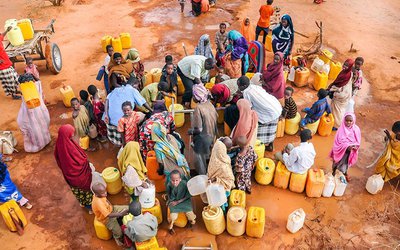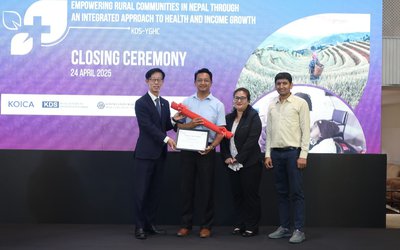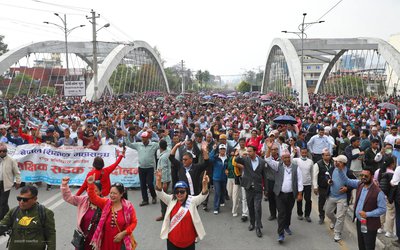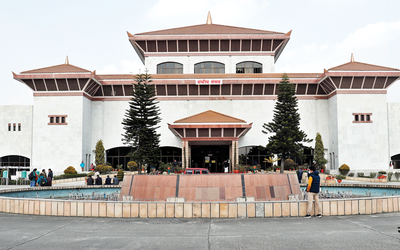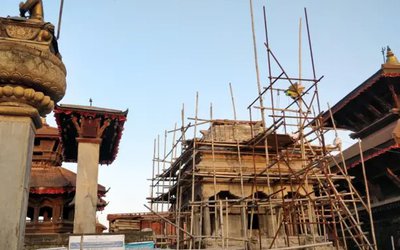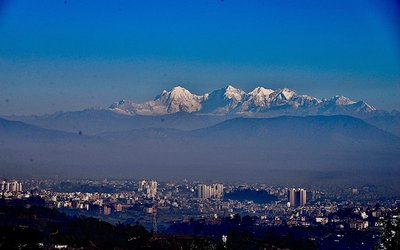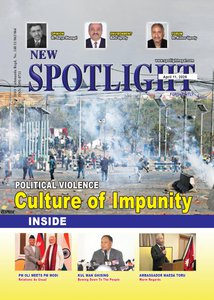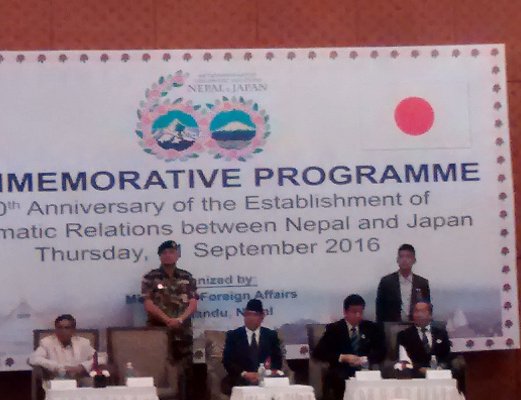
Almost at the end of the 19th century in 1899, Japanese Buddhist Monk Ekai Kawaguchi came to Nepal on his way to Tibet. This would be not only his first among the four visits he made to Nepal but the genesis of direct contact between the two nations of the orient infused with rich cultural and civilizational heritage. During the following 117 years, the contact got more diversified and enriched, in benefit both countries. Nepali students, who happened to be the first batch of Nepali to study overseas, were the first Nepali nationals to land in Japan in 1902.
The diplomatic relations between the two countries were established on 01 September 1956. As Nepal had come out of the cocoon of the isolationist foreign policy of the Rana Era and was opening up to the world, Japan was the seventh country with which Nepal established its diplomatic relations. Since then, the relationship between the two countries has been defined by mutual trust, profound goodwill and understanding. Nepal established its Embassy in Tokyo in 1965 and the Embassy of Japan in Kathmandu was established in 1967.
This year marks the the60th Anniversary of the establishment of diplomatic relations. In these sixty years of cordial relations, Nepal and Japan have worked closely for mutual benefits –at bilateral, regional as well as multilateral levels.
Various events and programs, in Nepal as well as in Japan, are being organized to commemorate the 60th Anniversary. Nobuo Kishi, State Minister for Foreign Affairs of Japan visited Nepal from 30 August to 01 September 2016 to participate in the special commemorative event being organized on 1st September 2016 in Kathmandu.
As the third largest economy in the world, Japan is one of its largest development partners for Nepal. The government and people of Nepal greatly value what it has been receiving as development assistance from Japan. Japan began its participation in Nepal’s economic development program in 1954 –two years before the formal relations would be established. It started to provide grants and loan aid in 1968. Japan’s cooperation covers almost all the sectors and dimensions of the Nepali economy –including agriculture, infrastructure development and human resources development. Since 1977, Japan has been providing cultural grant aid to Nepal to promote cultural, educational and research activities.
Japan has been assisting Nepal in the form of bilateral grants, bilateral loans, multilateral aid and technical assistance. The recent Japanese assistance to Nepal includes the modernization of Tribhuwan International Airport, GongabuBuspark, B.P. Highway, BanepaSindhuli Road Construction, Improvement of Kathmandu-BhaktapurRoad, Melamchi Water Supply Project (Water Treatment Plant), Tanahau Hydropower Project, Gender Mainstreaming and Social Inclusion Project among many others.
Nepal and Japan have extended valuable assistance to each other in times of distress caused by natural calamities. As the devastating earthquake struck Nepal on 25 April 2015, Japan immediately dispatched relief and rescue teams and provided emergency relief materials. The Japanese Government has agreed to provide assistance to Nrs. 26.19 billion to assist Nepal with post-disaster reconstruction.
Japanese assistance has largely contributed to Nepal’s socio-economic development. As Nepal is pursuing to graduate from the status of LDCs to a developing country by 2022, the assistance provided by Japan has to enable the role to relax the economic hardship and vulnerabilities. Similarly, bilateral aid should be mobilized by prioritizing the timely realization of Sustainable Development Goals (SDGs). The continuity of Japanese assistance for Nepal’s reconstruction drive is much desirable.
The government of Japan has been providing scholarships to Nepali students, for university courses, since the early 1960s. It launched the Human Resource Development Scholarship (JDS) in 2015 targeting officers of the Government of Nepal. From 1970 onwards, Japan has been providing technical cooperation by dispatching Japan Overseas Cooperation Volunteers. Similarly, JICA Partnership Programme (JPP) was introduced in Nepal in 2003, which has implemented various projects in partnership with different partner organizations.
The assistance of the Japanese government in the education sector, as well as the dispatch of Japanese experts, has largely aided to relax the bottleneck caused by a dearth of skilled human resources in Nepal.
Our relations are not limited to the bilateral framework. Japan is an important observer of SAARC since 2007. Japan’s engagement with SAARC began in 1993 after the establishment of the SAARC-Japan Special Fund. Similarly, Nepal and Japan have closely worked together in the United Nations and other multilateral forums. Both countries attach high importance to UN peacekeeping operations. Japan has been an important partner for the LDCs. It has been providing ODA through UN agencies and International Financial Institutions including the World Bank Group and the Asian Development Bank.
Given the limited trade volume between Nepal and Japan, and the trade balance unfavorable to the former, especial emphasis is needed to scale up the bilateral trade. Exports from Nepal, which include pashmina products, garments, woolen apparel, carpets, handicrafts, Nepali paper and paper products and likewise, accounted for 1,023 million Rupees in 2015. Similarly, Japanese export mainly comprising of high-end automobiles and electronic goods equivalent to Nrs. 4,956 million last year. Nepal’s trade deficit with Japan stood at Nrs. 3,993 million.
To accelerate Nepal’s economic development, it is imperative to increase the volume of bilateral trade and decrease Nepal’s trade deficit. Measures like more concessional business opportunities, relaxation of the rule of origin, simplification of other procedures and standards, and trade capacity building are required to scale up bilateral trade. The private business sector needs are stimulated, a regular exchange of trade delegation needs to be encouraged and areas of comparative advantages be explored.
Japan remains one of the major investors in Nepal. A total investment amounting to Nrs. 2050 million, in over 215 projects, has helped to create 7946 jobs in Nepal. Several Nepal-Japan ventures related to the hospitality industry, assembling industry, horticulture and construction sectors are operating in Nepal. A liberal policy regime, a rich resource base, bountiful water resources and abundant low-cost labor make an investment in Nepal profitable. Nepal’s location between two of the largest emerging markets, with easy access to markets of more than 2.6 billion people, provides another compelling incentive to do business in Nepal.
As Nepal-Japan relations pass through 60 years of diplomatic relations, we need to give more emphasis on trade and investment. Needless to say, it is trade and investment, which will steer the trajectory of Nepal’s development.
Nepal-Japan relations are not merely confined to the interactions between two governments. People-to-people relations are harmonious. Almost 60,000 Nepalisnationals are living in Japan and the Nepali community is the 6th largest foreign community in Japan. Similarly, Nepali students in significant number are pursuing their higher studies in Japan.
Nepal remains one of the attractive destinations to Japanese tourists. The Himalayas have lured a plethora of Japanese mountaineering expeditions since 1952. In 1956, the first successful attempt at Mt. Manaslu was made by Japanese Alpinist Mr. Minoru Higeta. The 60th Anniversary of that historic event was commemorated this year. Moreover, in the International Women’s Year of 1975, Ms. Junko Tabei from Japan reached the peak of Mt. Everest being the first woman to do so.
Lumbini –the birthplace of Lord Gautam Buddha is an important pilgrimage center for the Japanese. The Sister relationship between Lumbini and the Japanese city of Koyasan has been established. The rich cultural tapestry that endows Nepal and the overwhelming natural assets that adorn Nepal makes it a heavenly destination for Japanese tourists. Albeit the abundance of such enabling factors, the number of Japanese tourists is quite dismal. In 2001, almost 41,000 Japanese tourists visited Nepal. This number has disappointingly plunged down to a bleak figure of 9,267 in 2015. Nevertheless, the prospect of an increase in tourist flows remains bright. As the Nepali economy is struggling to recover from the earthquake disaster, it needs Japanese tourists more than ever before.
As Nepal-Japan relations reach 60, the two countries have cooperated in a multitude of sectors. Japan has been an important development partner to Nepal. Political relations are cordial. Cultural and religious linkage has further cemented the bond that the two countries and their people share. There is huge potential to enhance economic and commercial relations. The technological expertise and innovation of the Japanese economy have much to offer to Nepal’s development pursuit. As the 60th Anniversary of the establishment of the diplomatic relationship with Japan is being commemorated, both countries need to continue to tread upon the path of cordial relations in order to make the cooperation between Nepal and Japan a successful illustration of a rewarding partnership.
Bairagi is the foreign secretary of Nepal

